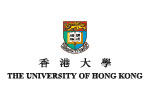Turning tent to townhouse? Ulaanbaatar’s
ger sprawl
The Faculty of Architecture is leading a project to transform Mongolian gers for urban living to help solve a housing problem brought about by mass migration to Ulaanbaatar.
Urban evolution on the outskirts of Mongolia’s capital Ulaanbaatar is undergoing a crisis. Economic reforms, coupled with harsh winters that wiped out livestock and destroyed crops, and a government ruling that native Mongolian adults are entitled to a plot of land, have sparked a mass exodus from the countryside by nomadic herdsmen heading to the city in search of a better life. Since 1989, Ulaanbaatar’s population has doubled, and the result has been an urban sprawl that has exploded the city’s size from 130 square kilometres to 4,700 square kilometres.
Joshua Bolchover, Associate Professor in the Department of Architecture, said: “The speed
of this urban evolution has been remarkable because you can simply pack up a ger [traditional felt tent], claim the land on which to put it, and set it up. The ger sprawl is also unique because unlike other informal settlements in developing countries, these districts are not illegal. However, that has not prevented them from being stigmatised as problem areas – effectively slums.”
“The tents are connected to the power supply,” said Senior Research Assistant Jersey Poon,
“but infrastructure such as roads, sewerage and waste disposal is lagging far behind. Further, everyone is burning raw coal, so the air pollution is diabolical.”
Describing the enormity of the change of life for these migrants, Mr Bolchover said: “This is all new to them. Before they were solitary and nomadic and they have no prior experience living amongst others. Tellingly, there is no word for community in Mongolian.”
The team’s initial aim was to understand the spatial characteristics of how this unique rural-urban fringe evolved, and then to develop innovative architectural prototypes that could contribute to the integration of the ger districts into a viable urban construct. Using the humble ger as the basis for the concept made sense– they are readily available at the market, and many migrants already have one.
Mr Bolchover and team first went to Ulaanbaatar in 2014 with basic seed-funding and some ideas. The initial project, funded by the Asian Foundation, was a scheme for solid waste collection in the ger district.
Despite problems that included trying to pour concrete in minus 30 degrees, the project was successful, and inspired more ideas. “We asked ourselves if we could provide buildings for
child care, a community centre, library, a shop,” said Ms Poon. “That was also when we started to develop ideas for modifying and improving the ger.”
The ideas took shape when the Architecture Department was commissioned to go to the Venice Biennale – and made gers the focus of their exhibit. “We thought the Biennale was a great platform to tell people about the problems in Ulaanbaatar,” said Mr Bolchover.
“For Venice we did modified gers,” said Ms Poon. “One was wooden, another felt, and a third was wrapped in Lycra. We also showed videos of our projects, described our incremental strategy and held an exhibition of portraits of ger district residents.”
One of the couples interviewed for the exhibition agreed to the team using their plot of land for the ger prototype. The architects worked on design, the Lorinet Foundation got involved on the funding side and Ger Hub, an NGO, became their local partners in Ulaanbaatar.
Ger Plug-In
The resulting prototype is the ‘Ger Plug-In’, an infrastructural spine which attaches to the ger and contains a kitchen area, shower, toilet and septic tank. “You can hang the whole ger from our new structure, so we were able to remove two supporting columns then take out a quarter of the ger circle which is where the plug-in goes,” said Ms Poon.
Traditionally the stove is in the centre of the ger, but this means it is smoky and dangerously hot, so they moved it to the side. They also included a solar trombe wall, made of black PVC pipes filled with sand. The sun heats the sand in the day, and at night the stored heat is released into the ger. Under-floor heating set in a concrete floor adds thermal stability and a central brick wall makes the temperature more constant.
Mr Bolchover said: “We threw in as many ideas as we could because this was the pilot and we wanted to see what works. The couple have now been living here for 18 months, and we are constantly monitoring it to see how to make it better.”
Cost is an issue: the Ger Plug-In costs US$13,000 to build and the Architecture team is now working to find ways to help residents fund the housing. “The Asian Development Bank has huge projects in Ulaanbaatar – around US$60 million in loan strategies are available over the next five years, but these are not reaching people at the lower end of scale,” said Mr Bolchover. “We are working within Ulaanbaatar’s financial infrastructure to enable people to get loans at lower interest rates.”
“Our involvement is long-term,” said Ms Poon. “We will evolve the structure and find ways to cut costs further. At present we are working on a plug-in with a shared-wall structure, allowing up to four gers to share the same infrastructure.”
They are also building a community centre in Ulaanbaatar, sponsored by the Hong Kong Jockey Club and working again with Ger Hub. The centre is being built in an area known as Eco-Town, and around 40 architecture students have been on-site working on its construction.
“The design is inspired by the different layers found in a traditional ger, but this time we have pulled the layers apart to create different temperature zones,” said Mr Bolchover.
“We have had a large team of students working alongside Mongolian carpenters and translators– it has been an amazing experience. The electricity would go on and off all the time, and there have been numerous challenges but as a hands-on opportunity for experiential learning it is second to none.”
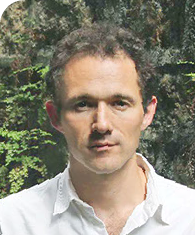
![]() The ger sprawl is unique because unlike other informal settlements in developing countries, these districts are not illegal. However, that has not prevented them from being stigmatised as problem areas – effectively slums.
The ger sprawl is unique because unlike other informal settlements in developing countries, these districts are not illegal. However, that has not prevented them from being stigmatised as problem areas – effectively slums. ![]()
Mr Joshua Bolchover
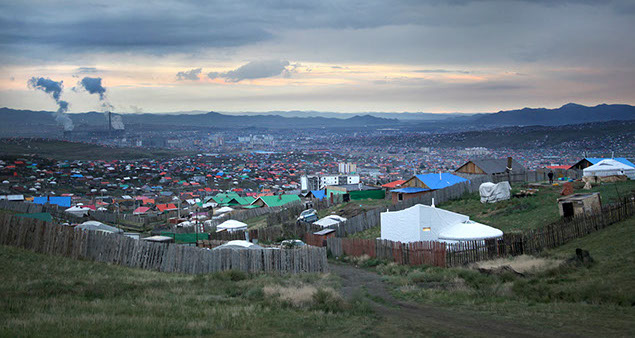
Next
Back
The interior of the Ger Plug-In.
Architecture students building Ger Plug-In.
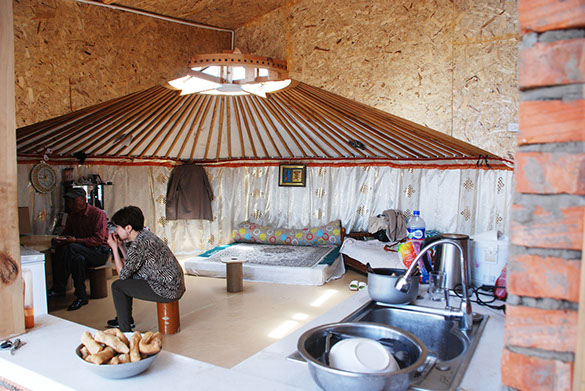
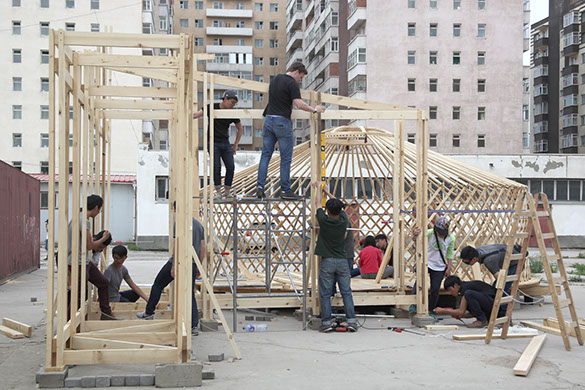
Home
May 2019
Volume 20
No. 2

Research
